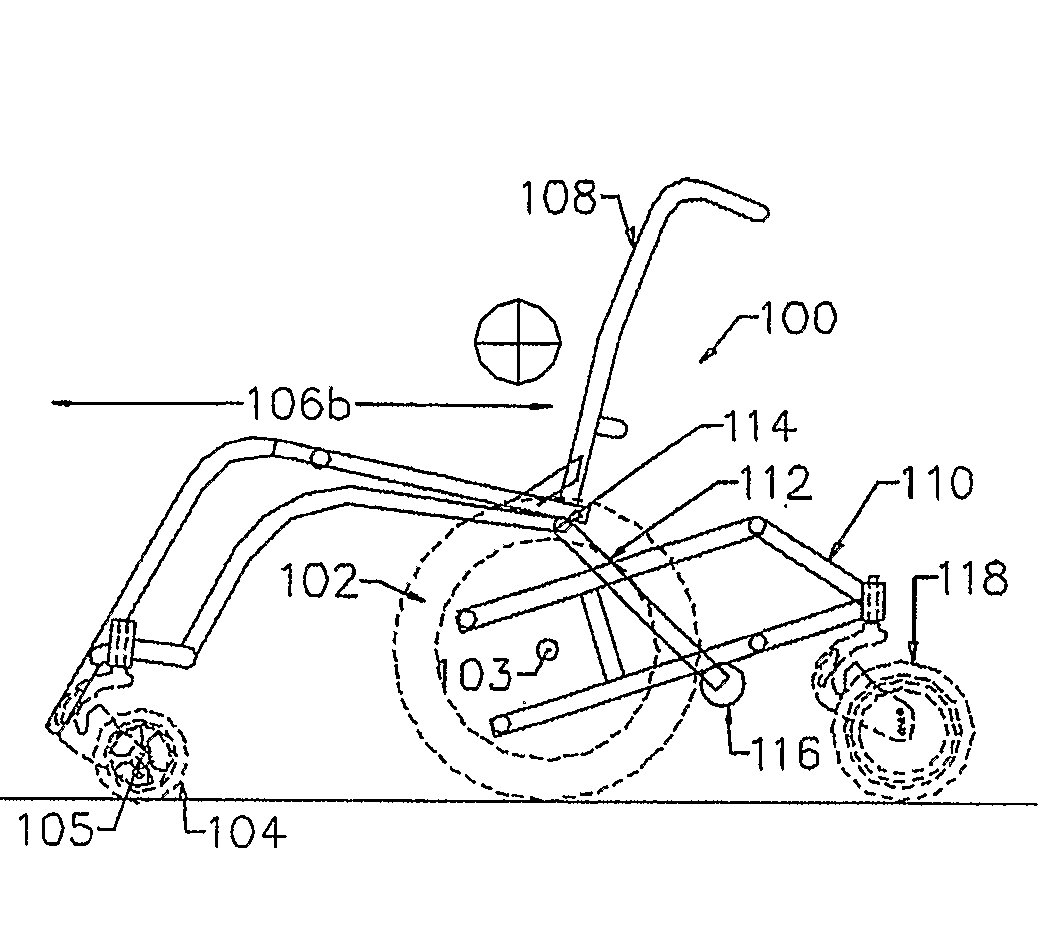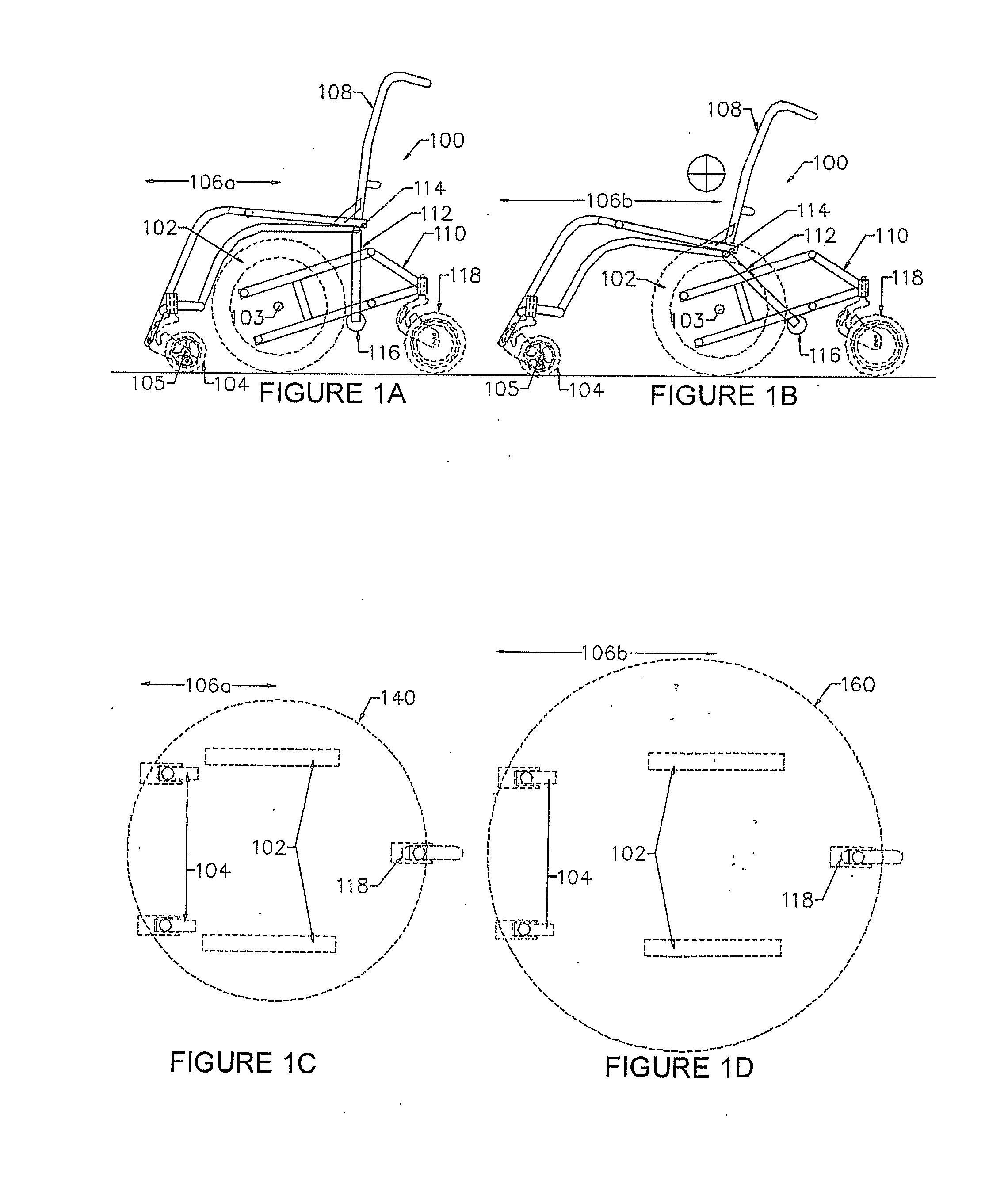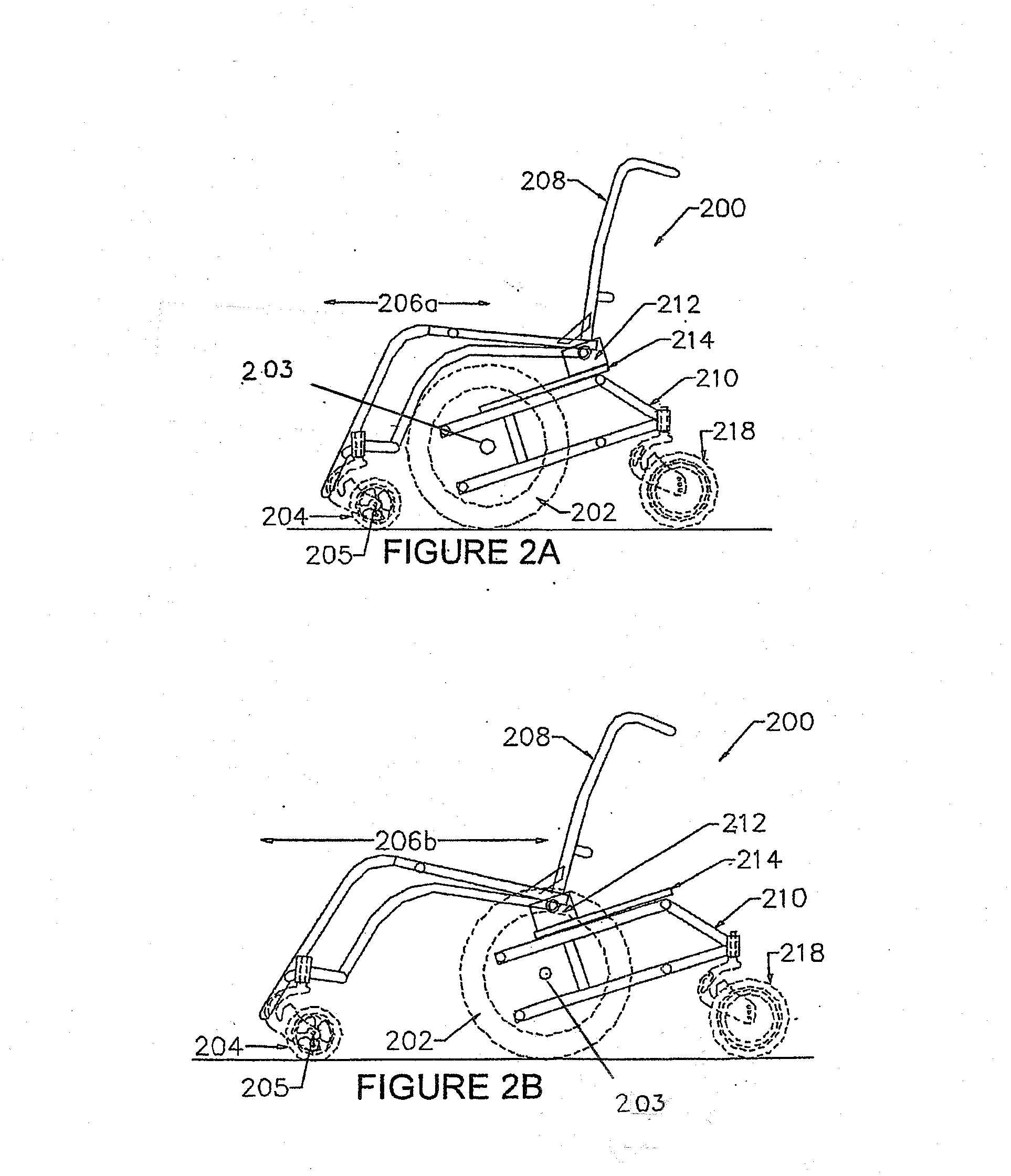Dual Mode Wheelchair
a wheelchair and dual-mode technology, applied in the field of wheelchairs, can solve the problems of reducing the stability of the wheelchair at speed or uneven ground, unsuitable for long distance travel, and unsuitable for use in confined indoor environments, so as to reduce the likelihood of the chair overturning
- Summary
- Abstract
- Description
- Claims
- Application Information
AI Technical Summary
Benefits of technology
Problems solved by technology
Method used
Image
Examples
first embodiment
[0050]FIG. 1 illustrates a dual mode wheelchair 100 in accordance with the present invention. Wheelchair 100 comprises two rear drive wheels 102 mounted to sub-frame 110 on a rear axis 103, and two fore castor wheels 104 mounted to seat frame 108 on a fore axis 105. A distance between the rear axis 103 and fore axis 105 defines the wheelbase 106 of the wheelchair 100. Seat frame 108 is movably mounted to sub-frame 110 by a pivot arm 112 having a pivotal connection 114 to seat frame 108 and a pivotal connection 116 to sub-frame 110. A fore portion of seat frame 108 is secured to sub-frame 110 by damped support means (not shown in FIG. 1). Sub-frame 110 further comprises a rear castor wheel 118, positioned rearward of the rear drive wheels 102 and, as shown in FIGS. 1c and 1d, positioned substantially centrally between the sides of the wheelchair 100. The provision of rear castor wheel 118 in the present embodiment provides for the torque from the drive wheels 102 to be transmitted to...
second embodiment
[0054]FIG. 2 illustrates a wheelchair 200 in accordance with the present invention. Wheelchair 200 comprises rear drive wheels 202 mounted to a sub-frame 210 on a rear axis 203. Wheelchair 200 further comprises fore castor wheels 204 mounted to a seat frame 208 on a fore axis 205, and a rear guide castor wheel 218 mounted on sub-frame 210. A sliding mount attachment 212 of seat frame 208 is movably mounted to a sliding mount 214 of sub-frame 210. The sliding mount 214 is angled thus providing for the sliding mount attachment 212 of the seat frame 208 to travel forwardly and downwardly when the wheelbase 206 is lengthened from the manoeuvrable mode of FIG. 2a (206a) to the travel mode of FIG. 2b (206b). Again, a fore portion of seat frame 208 is secured to sub-frame 210 by damped support means (not shown in FIG. 2).
[0055] Movement of sliding mount attachment 212 between the manoeuvrable mode and the travel mode may be effected by a motor (not shown) or manually by a hand operated thr...
PUM
 Login to View More
Login to View More Abstract
Description
Claims
Application Information
 Login to View More
Login to View More - R&D
- Intellectual Property
- Life Sciences
- Materials
- Tech Scout
- Unparalleled Data Quality
- Higher Quality Content
- 60% Fewer Hallucinations
Browse by: Latest US Patents, China's latest patents, Technical Efficacy Thesaurus, Application Domain, Technology Topic, Popular Technical Reports.
© 2025 PatSnap. All rights reserved.Legal|Privacy policy|Modern Slavery Act Transparency Statement|Sitemap|About US| Contact US: help@patsnap.com



